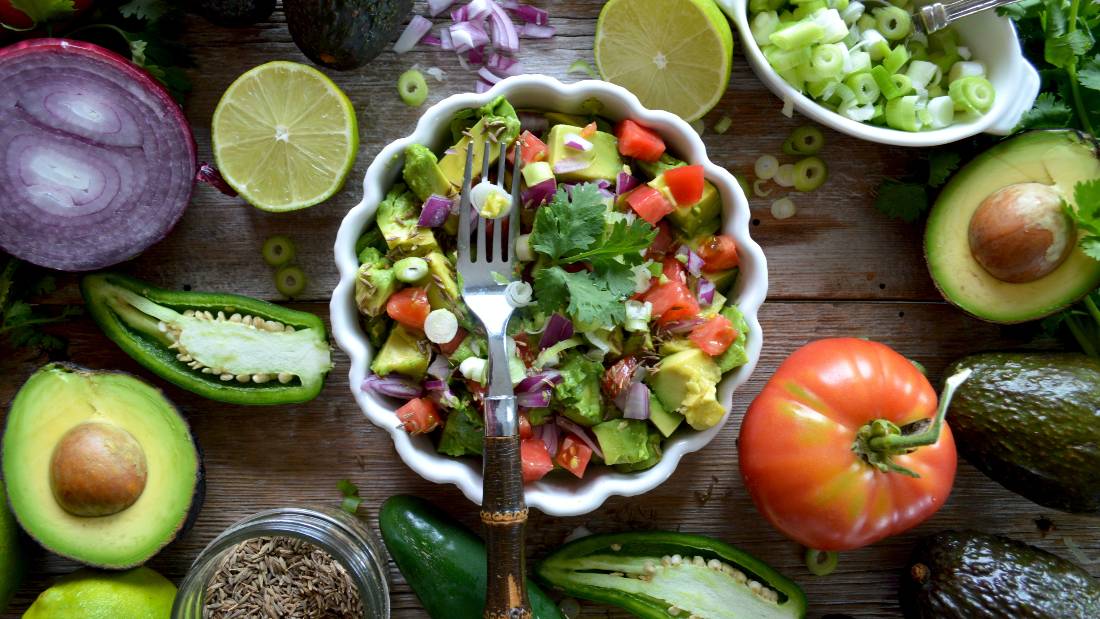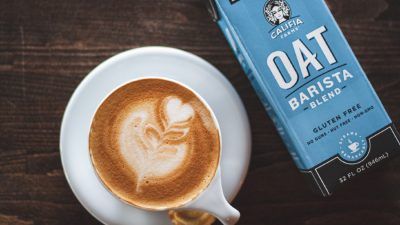10 Foods to Help Manage Blood Glucose

Whether we have diabetes, prediabetes or neither, it can still be a good idea to pay attention to our blood sugar levels. Foods with a high glycaemic index (GI) cause our blood sugar to rise rapidly, which, in people without diabetes, is then neutralised with the release of insulin from the pancreas. But even if we don’t have diabetes, lots of rapid increases and decreases in blood sugar can still be deleterious to our health, resulting in a greater risk of cardiovascular disease and developing insulin resistance. Here are 10 low GI foods that can help manage and stabilise blood sugar levels.
1. Beans and pulses
Thanks to their protein and complex carbohydrates, they help stabilise blood sugar and because of that are great at preventing and managing type 2 diabetes.
The complex carbohydrates in beans, packaged with lots of fibre, are digested slowly so blood sugar levels stay stable for longer. Beans are also high in protein, which the body turns to glucose very slowly, resulting in much lower blood sugar rises. The protein also keeps you fuller for longer, so you don’t eat as much and therefore manage weight better.
2. Broccoli, kale and other cruciferous vegetables
One reason we’re advised to eat plenty of cruciferous veggies, like kale, Brussels sprouts, broccoli and cauliflower, is because they contain a sulphur-rich compound called sulforaphane. When we chop these foods, they produce sulforaphane around the cut areas as a defence mechanism – unfortunately for them, the defence mechanism backfired as it is one of the reasons we want to eat them.
And why is sulforaphane so special? It has been linked to reduced risk of cancer, improved heart health and stabilising blood-sugar levels. As an antioxidant, sulforaphane combats free radicals and it also has anti-inflammatory properties. Sulforaphane has been described as a “promising natural molecule” and more will be revealed with future human studies.
3. Oats
Although oats are high in carbohydrates, they can still help manage blood sugar levels because they are so full of fibre. Oats contain both soluble and insoluble fibre – essential for a healthy digestive system and important for effective sugar and fat metabolism. The soluble fibre in oats is unique in that it includes beta-glucans – a type of soluble fibre that absorbs significant amounts of water and forms a soft gel. This slows down the speed of digestion so oats can give you long-lasting energy and a slower sugar spike.
Regular consumption of fibre and oat beta-glucans in particular, is known to reduce cholesterol levels, help regulate blood sugar levels and aid healthy weight management. Make sure you stick to coarse oatmeal or rolled oats and avoid instant oats.
4. Pumpkin seeds
In a 2018 randomised placebo-controlled clinical trial, participants were fed 65 grams of pumpkin seeds with a high carbohydrate meal. The researchers found that the “pumpkin seed markedly reduced postprandial glycaemia”, or in other words, reduced the blood sugar spike after the meal by up to 35 per cent.
Pumpkin seeds are also a great source of iron, zinc and protein and contain an extra dose of vitamin K and magnesium. Magnesium has a range of important functions in the human body, including nerve and muscle signalling, bone metabolism and the functioning of healthy blood vessels, as well as managing blood sugar levels.
5. Flaxseed
Just like all seeds, flaxseeds are an excellent source of fibre. However, unlike many other seeds, the contains substantial amounts of soluble fibre that naturally absorbs water. The result is a gel which, in your digestive system, slows down digestion and delays hunger. By slowing down food absorption in the gut, soluble fibre helps to regulate blood sugar and cholesterol levels and, lower down in your large intestine, it feeds your good gut bacteria.
6. Nuts and peanuts
Almonds are especially good for blood sugar control. Not only are they high in magnesium, which may reduce the risk of developing diabetes, but they may also increase insulin sensitivity in people with prediabetes. The more insulin sensitive we are, the less insulin our body needs to produce to counter blood sugar spikes. A 2018 study found that when people with type-2 diabetes were given either almonds or peanuts (technically a legume) with a meal, both their fasting and postprandial (after a meal) blood glucose levels improved.
Studies have also shown that women who eat nuts five times or more per week have been shown to have a 45 per cent reduced risk of developing type 2 diabetes. Eating peanut butter more than four times a week was also associated with a 21 per cent reduced risk.
7. Berries
Even though berries are sweet, they don’t contain much sugar because much of their volume is pumped up by water. What little sugar they provide is well-balanced by the amount of fibre in them so it’s a healthy equation. Berries won’t cause sudden blood sugar spikes and as such are also a great food for diabetics. In fact, blueberries have been shown to actually improve insulin sensitivity in insulin-resistant men and women.
8. Avocado
Avocados are a great choice for those trying to manage their blood glucose because they are low in sugar but high in fibre and healthy, monounsaturated fats.
A 2007 randomised controlled trial showed that monounsaturated fats helped participants effectively manage their weight, improved their insulin sensitivity and reduced postprandial blood glucose levels.
9. Probiotic yoghurts
Research shows that yoghurts containing probiotics may have beneficial effects on blood glucose control.
One study of 80 participants with type 2 diabetes found that those who ate probiotic yoghurts for eight weeks had reduced LDL cholesterol (the ‘bad’ type) while HDL cholesterol (the ‘good’ type) increased. The researchers also found that yoghurt consumption improved fasting blood glucose levels, concluding: “probiotic yoghurt and C. ficifolia alone or together have beneficial effects on lipid profile, glycaemic control, inflammation, and blood pressure in type 2 diabetic patients.”
If you stick to sugar-free soya yoghurts you’ll also reap the benefits of soya, which has been shown to reduce the risk of developing type 2 diabetes.
10. Pumpernickel/rye bread and other wholegrains
Research shows that replacing refined grains with wholegrains – and eating at least two servings of wholegrains daily – may reduce the risk of type 2 diabetes by 20-30 per cent. The complex carbohydrates and fibre in wholegrains prevent blood sugar highs and lows by maintaining steadier levels.
An analysis of three prospective cohort studies of over 194,000 people found that “Higher consumption of total whole grains and several commonly eaten whole grain foods, including whole grain breakfast cereal, oatmeal, dark bread, brown rice, added bran, and wheat germ, was significantly associated with a lower risk of type 2 diabetes.”
Being diagnosed with prediabetes or diabetes can be very daunting, but just remember, whole plant foods are your friend. Whether you’re actively trying to improve your blood sugar management because of a diagnosis or you’re just trying to lead a healthier life, hopefully this has shown that you have more control over your blood sugar than you may have thought.







